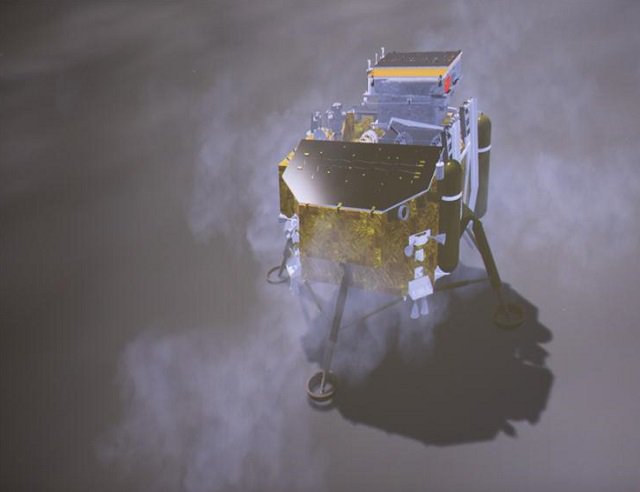
"With the required approval from Congress, NASA has been in discussions with China to explore the possibility of observing a signature of the landing plume of their lunar lander, Chang'e 4, using our @NASAMoon spacecraft's instrument," NASA's associate administrator for the science mission directorate, Thomas Zurbuchen, said on Twitter.
Zurbuchen's tweet confirmed a similar statement made Monday by the deputy chief commander of China Lunar Exploration Program, Wu Yanhua.
US regulator approves SpaceX plan for broadband satellite services
NASA shared information from a US satellite while China told the Americans about the latitude, longitude and time of the landing "in a timely manner," he said.
The hope was that NASA's Lunar Reconnaissance Orbiter (LRO) could observe the historic touchdown of the Chinese lander on January 3.
NASA provided the planned orbit path of LRO to China, but it turned out the spacecraft was not in the right place at the right time.
"For a number of reasons, NASA was not able to phase LRO's orbit to be at the optimal location during the landing, however NASA was still interested in possibly detecting the plume well after the landing," the agency said in a statement.
"Science gathered about how lunar dust is ejected upwards during a spacecraft's landing could inform future missions and how they arrive on the lunar surface."
Such observations could help astronauts prepare for future missions to the Moon.
NASA's lunar orbiter will pass over the Chang'e 4 landing site on January 31 and will snap pictures, as it did for the Chang'e 3 in 2013.
The agency said significant findings resulting from the cooperation would be shared with the global research community in February at a United Nations space gathering in Austria.
NASA wants people on Mars within 25 years
Since 2011, the US Congress has barred NASA or the White House Office of Science and Technology Policy from using federal funds "to develop, design, plan, promulgate, implement or execute a bilateral policy, program, order, or contract of any kind to participate, collaborate, or coordinate bilaterally in any way with China or any Chinese-owned company."
Exceptions are possible, but NASA must convince Congress and the FBI that the activity would "pose no risk of resulting in the transfer of technology, data, or other information with national security or economic security implications to China or a Chinese-owned company."
NASA said in its Friday statement that "all NASA data associated with this activity are publicly available" and "NASA's cooperation with China is transparent, reciprocal and mutually beneficial."







1732347751-0/Express-Tribune-(1)1732347751-0-270x192.webp)


1732264554-0/Copy-of-Untitled-(68)1732264554-0-270x192.webp)






COMMENTS
Comments are moderated and generally will be posted if they are on-topic and not abusive.
For more information, please see our Comments FAQ